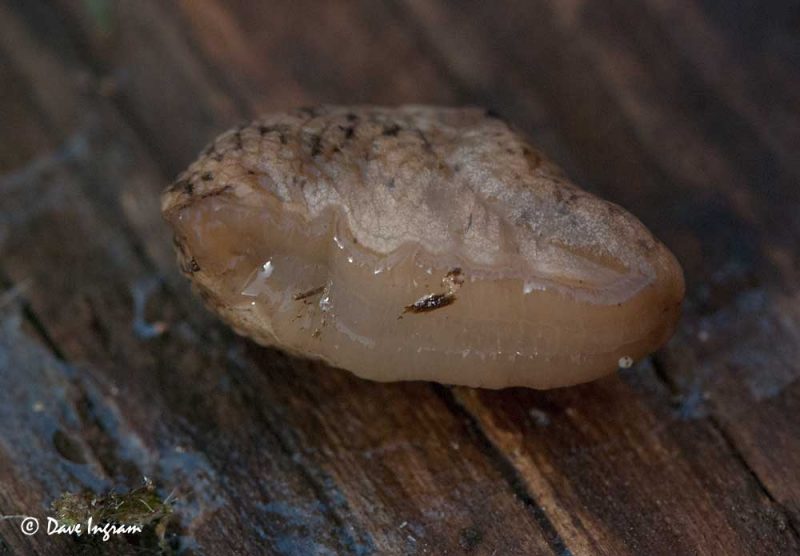If you’ve got a garden or a flowerbed it’s always fun to leave some boards lying around on the ground. Come back in a week or so and you’ll discover some of the organisms that live in your garden but perhaps have never seen before under this makeshift shelter. A warning to the squeamish – you may not like what you find but hopefully you’ll be fascinated! And if you don’t have a garden yet, why not start one?

My three and a half year old son Alden and I were out poking around in the garden last week and found some interesting sowbugs underneath paving stones. We also found several different kinds of garden slugs. Unfortunately slugs can be rather tricky to identify without the proper field books and even then it can be a challenge. I use Robert G. Forsyth’s excellent Land Snails of British Columbia and a copy of Identifying Land Snails and Slugs in Canada which is available free from the Canadian Food Inspection Agency.

The Meadow Slug (Deroceras laeve) is a unremarkable looking slug at first glance. The most noticeable feature is the fingerprint like whorl on the slug’s mantle that is a characteristic of this genus. The pneumostome (opening that leads to a mantle cavity that acts as a lung) is positioned toward the back of the mantle. There are several species in this genus that look fairly close in appearance so you have to slow down and take a closer look.
In order to eliminate some of the other slugs in this genus you have to touch the slug and turn it over.
One of the mistakes that I make over and over again (but I am learning) is to assume that a distinctive looking slug is going to be easy to identify. While it is necessary to make good observations about the visual look of the top and side of the animal, the colour of the foot and the colour and texture of the mucus are often very useful as a field marks. After looking through my field books I made a second trip out to the garden to gather more data.

The slugs in question were around 30 – 35 mm in length (25mm is approximately equal to 1 inch). Turning it over, I could see that the sole of the slug was a tan colour. The slime seemed to be clear and not white and sticky. These were two important features and eliminated D. panornitanum (pale grey sole) and D. reticulatum (whitish sole producing thick white mucus when agitated – i.e. gently poked). The only other option in my field books was D. hesperium which was described as being around 20mm in length.
Similar looking species like the Giant Gardenslug (Limax maximus), also have whorls on their mantles so you can’t jump to conclusions based on visual appearance. Note that the Giant is usually larger (up to 100 mm long) and has a creamy white sole.

Based on these field marks I’m reasonably certain that this is indeed the meadow slug, a “cosmopolitan” slug native to North America (including British Columbia). I’m not sure that these are native slugs or more recent arrivals since some exotic populations may have been introduced from Europe and other locations with garden products.
The curious thing is that while looking at these meadow slugs I also found several similar looking slugs with white soles – a different kind of slug that I’ll have to figure out for another time.
Disclaimer:
Having said that I’m reasonably certain that this is a D. laeve I should explain that the key to conclusively identifying these species requires that you dissect the slug to examine its reproductive system. I don’t really want to do that – I’m actually happy enough to have been able to narrow this down conclusively to Deroceras sp.. In case you’re curious, slugs have very distinct looking penises that are often used to separate species that visually look very similar.
Enough said, you’re on your own if you want to learn more.
Looking to find out more about other invertebrates? Check out this month’s Circus of the Spineless, hosted by NeuroDojo.
